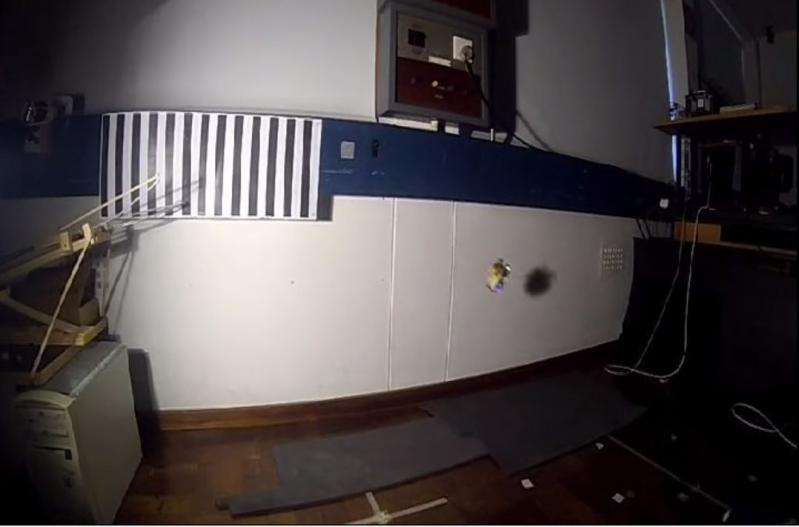October 8, 2015 weblog
University team's robot inspired by jumping spider

Special insights and observations about how animals move, handle danger and preserve energy are not only interesting but valuable to scientists in the field of robotics. One such contribution of animal-like robotic movement was presented at IROS 2015 in Hamburg, Germany.
Three researchers from the University of Cape Town in South Africa presented their work, "A Spider-Inspired Dragline Enables Aerial Pitch Righting in a Mobile Robot."
Stacey Shield, Callen Fisher, and Amir Patel made a significant contribution in working on a novel approach for achieving "aerial pitch righting" in a mobile robot. Animals are gifted in self-righting, reorienting, self-stabilizing while in air; they bend or swing their tails, impressing human observers in the way they meet challenges such as keeping stable while in air and, as important, being able to make a smooth landing.
As for robots, an engineering challenge has been to maintain in-air stability and smooth landing. The team's robot was created to see if it could replicate the jumping talents of the spider; namely, they were interested in the draglines used by jumping spiders.
This would not be the first time researchers have shown interest in spiders' body maneuvers in air. In 2013, four researchers discussed in the Journal of the Royal Society Interface how spiders with dragline silk can change body orientation in the air.
"Instantaneous drag and silk forces calculated from kinematic data further suggest a comparable contribution to deceleration and energy dissipation, and reveal that adjustments by the spider to the silk force can reverse its body pitch for a predictable and optimal landing."
Shane McGlaun of SlashGear took note of the study and kinds of spiders which hunt their food and then jump to grab it. The jumping spiders served as the inspiration for the robot from the team at University of Cape Town in South Africa. The robot is called LEAP (Line-Equipped Autonomous Platform). Why is the silk so important for jumping spiders?
IEEE Spectrum's Evan Ackerman wrote: "Jumping spiders might not build webs, but they can still produce silk, and they don't like leaping into the void without a safety rope any more than you do. Before they jump, they tether themselves, and then release more silk as they fly, so that if they miss their target they can catch themselves and then climb back up to where they launched from."
SlashGear compared the silk rope with the robot tether: "When the spider jumps, it uses a silk strand it creates as a tether that it can pull on selectively to ensure that it will land upright. LEAP uses the same idea with a braided nylon line that unspools as the robot is in the air during a jump, or more appropriately during flight from a catapult." Ackerman said that it can exert in-flight influence over the unspooling braided nylon line using a small DC motor.
As such, the researchers' jumps are controlled. LEAP, added SlashGear, is flung into the air rather than jumping under its own power. The robot uses periodic dragline braking to alter the direction it is pitching for a controlled landing. This allows the robot to land right side up, said SlashGear.
The researchers sought more insight into factors affecting the pitch response. In the abstract, the authors said "The results demonstrate that the dragline could also potentially function as a brake, slowing the spider down before landing." They said they developed and simulated a mathematical model of the spider during the aerial phase of its jump. Results: the robot was able to land right side up, at least as far as pitch is concerned, said Ackerman.
© 2015 Tech Xplore



















